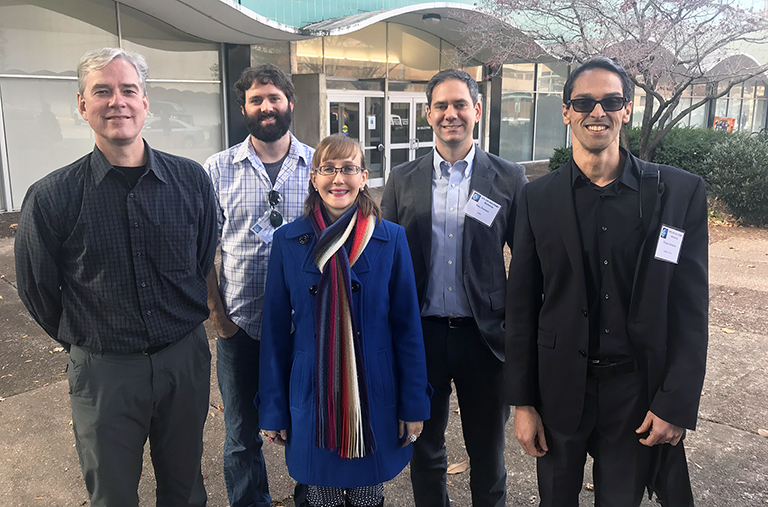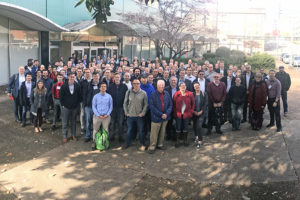
The conference co-chairs are leading the Magnetic Fusion Energy (MFE) and Fusion Materials & Technology (FM&T) areas of the process and set the agenda for the Knoxville workshop. From left to right they are John Sarff (UW-Madison), Nathan Howard (MIT), Lauren Garrison (Oak Ridge National Laboratory), Nathaniel Ferraro (Princeton Plasma Physics Laboratory), and Wayne Solomon (General Atomics).
The 2nd Joint Community Planning Workshop for Magnetic Fusion Energy and Fusion Materials & Technology, held at UT in November, brought together approximately 175 attendees from institutions across the US to revise and fine-tune a draft plan for the highest strategic priorities for experts to address in the plasma physics and fusion energy science (FES) fields. This was organized by a national organization that was formed for the purpose of leading these workshops called the American Physical Society (APS) Division of Plasma Physics (DPP) Community Planning Process (CPP).
In fall 2018, the DOE Office of Fusion Energy Sciences (OFES) announced the beginning of the “FES Long-Range-Strategic Planning Activity.” This purpose of this activity is to get the fusion community—meaning all the scientists, engineers, professors, researchers, etc. studying plasma physics and fusion energy science in the United States—to come together to agree on what they think is the best path forward for fusion research over the next several decades.

Attendees of the 2nd Joint Community Planning Workshop for Magnetic Fusion Energy and Fusion Materials and Technology.
The call for this activity came about because of several relatively good years of funding for fusion research by the DOE and significant progress towards completing the international fusion experiment ITER within the next decade.
“This has prompted a somewhat optimistic possibility of new opportunities for funding for fusion energy science in the future, but first the community has to agree on what it wants to do,” said NE Assistant Professor David Donovan, whose research is in fusion. “Fusion energy science is a very complicated science and technology program requiring a variety of different expertise, and there is not always agreement on where we should focus our resources to best get towards our goals.”
The community recognizes that it can only succeed if researchers can work together and obtain consensus and agreement about the path forward before convincing the public and the DOE of that path. Donovan says that the plan that is developed does not need to be perfect, it just needs to move the community forward and demonstrate progress towards the goal of achieving fusion energy production.
The Knoxville workshop was organized by Donovan with the help of UT-ORNL Governor’s for Nuclear Materials Steven Zinkle, UT graduate students and postdocs, and NE staff.
The students not only helped with planning details, they also were able to participate in discussion sessions with community experts and provide their own input to the process. These students are already part of the fusion community because of the research they are performing as part of their graduate studies, and the plan that is currently being developed is one that they will be working with for the next several decades. Participating in this conference offered them an excellent opportunity to see in person how the community makes large-scale decisions about the future of fusion research.